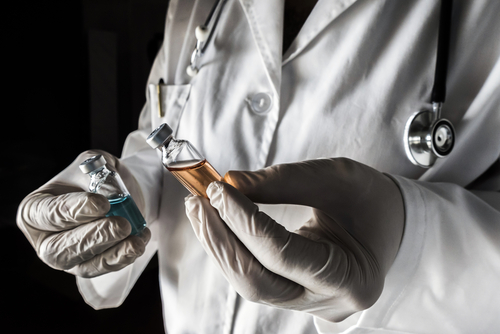Use of Monofer (iron isomaltoside) instead of Ferinject (ferric carboxymaltose, also known as Injectafer in the U.S.) reduces the number of iron infusions required by people with inflammatory bowel disease (IBD) and associated iron deficiency anemia (IDA), a Danish nationwide study revealed.
The reduced need for iron infusions was found to promote significant cost savings compared to use of Ferinject, researchers reported.
The study, “An Economic Evaluation of Iron Isomaltoside 1000 Versus Ferric Carboxymaltose in Patients with Inflammatory Bowel Disease and Iron Deficiency Anemia in Denmark,” was published in the journal Advances in Therapy.
IDA is a common complication of IBD, caused by persistent blood loss through the intestines and impaired absorption of nutrients such as iron and vitamin B12.
To manage this and prevent its worsening, iron infusions are often the first treatment in patients with active IBD who are intolerant to oral iron or have reduced hemoglobin (the protein that transports oxygen in the blood) levels.
“Intravenous iron is more effective, shows a faster response and is better tolerated than oral iron in these patients,” researchers said.
The incidence of IBD has increased over the past few decades, particularly in Denmark, among the countries with the highest incidence of the disease in the world. Given so, therapeutic management of IBD represents a heavy economic burden for the nation.
With this in mind, researchers evaluated how different intravenous iron therapies, particularly the use of Monofer and Ferinject, could affect the cost and resources in the treatment of IBD-associated IDA from a national payer perspective.
The team used previously published data to estimate the number of IBD patients in Denmark who would have IDA.
Based on the available information, they estimated that about 0.151% and 0.294% of the Danish population is affected by Crohn’s disease and ulcerative colitis, respectively. Among this group, 24% also have some form of anemia, and approximately 3,522 people (57% of the anemic patients) have IBD-associated iron deficiency.
Taking these figures into consideration, and assuming that all these patients would receive iron replacement therapy, the team created a model to estimate the usage of Monofer and Ferinject and related cost.
They found that administration of a maximum dose of 20 mg/kg of Monofer would reduce the need for infusions per patient by 23.9%, compared to Ferinject administrated up to a maximum of 1,000 mg in a single dose. Overall, only 25% of patients treated with Monofer would require multiple intravenous administrations, compared with 64.3% of patients treated with Ferinject.
Cost analysis revealed that within a five-year period, use of Monofer would represent a savings of 23.9%, from 28,137 Danish kroner (approximately $4,252) per patient with Ferinject to 21,406 kroner ($3,235) with Monofer.
“Using Monofer in place of Ferinject markedly reduced the number of iron infusions required in patients with IBD and IDA in Denmark, accompanied by reductions in cost,” researchers said.
Still, the analysis did not take into consideration other potential costs such as patient transportation, infusion center operating costs, and costs of lost workplace productivity, which “would probably substantially amplify the savings from any given broader perspective.”
“Monofer should represent the iron replacement therapy of choice in patients with IBD and IDA in the Danish setting,” they concluded.

